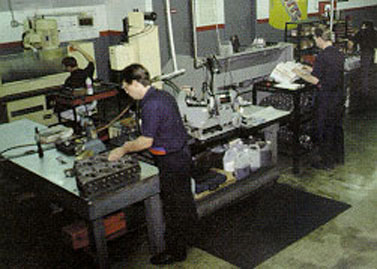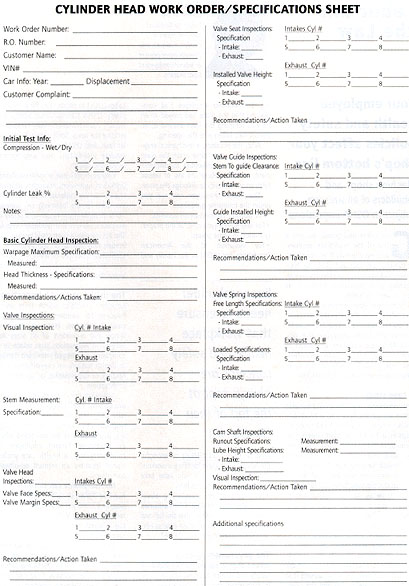
"Don’t blame me. It’s not my fault."
How many times
have you either heard or spoken those sentences when undertaking
work as either a service facility or automotive shop owner. In
my more than 20 years associated with automobile manufacturer
service training, the question of how to ensure a job is done
correctly, and whose responsibility it is to see that it is done
correctly, seems to come up almost every time that I conduct an
engine technology class.
First, I think it is important that we look at what most dealership
technicians’ job tasks are with regards to engine reconditioning.
Due to the rising cost of both labor and equipment, most dealerships
limit what they will tackle in engine repair or rebuilding.
Generally, they will do internal engine condition diagnosis, major
unit assembly of replacement parts, and some basic service procedures
such as cylinder honing, rings, bearings, seals, etc. But this
means that anything beyond these basic operations will many times
be performed by a local machine shop.
This often is where the problem begins. When, for example, a cylinder
head is dropped off to be "reconditioned," what exactly
does that mean to both the dealership and the machine shop doing
the work? Actually, it often seems to mean different things to
both. However, if a few important questions were answered before
the job was begun, both the dealership and the machine shop would
understand what each expects from the other.
These questions, for example, consist of some of the following:
What is the minimal head thickness allowed by the manufacturer?
What is the installed height of the valves and guides supposed
to be? Should the machine shop reface the valves or replace them
with new ones? Who should make the decisions to repair or replace
specific components?
Most of these questions could be resolved if the dealership and
the machine shop used a detailed work order/specifications sheet.
Use of such a sheet would precisely outline specifications, measurements,
recommendations and what was actually done with regard to a specific
job.
Such a cylinder head worksheet is provided below. Let’s take a
look at some of the individual sections of the worksheet.
The general information that is needed to make sure that the "right
stuff" gets done on each job is often overlooked by both
the dealership and the machine shop doing the work. But by letting
the machine shop know what the customer’s complaint was, along
with any initial diagnostic work that was done at the dealership,
the machine shop can more easily pinpoint the exact cause of a
problem.
The rest of the work order is pretty self-explanatory except for
the question of specifications. In most dealerships the cars that
are being serviced most often are generally only three to four
years old. However, most aftermarket specification sources that
are available to machine shops are usually at least one or sometimes
two model years behind in current information.
New car and truck dealerships have all the specifications and
specialized service procedures needed for all of the current models.
The dealership that you are working with should be able to provide
any spec sheets that are requested so that you also have access
to the information which is necessary for you to successfully
complete the work.
The bottom line is that a little bit of cooperation and communication
between the machine shop and the dealership will go a long way
in eliminating any misunderstanding in service procedures required
or completed by the machine shop. For any completed job, the result
should be that neither the dealership nor the machine shop will
ever have to say, "Don’t blame me. It’s not my fault,"
again.














